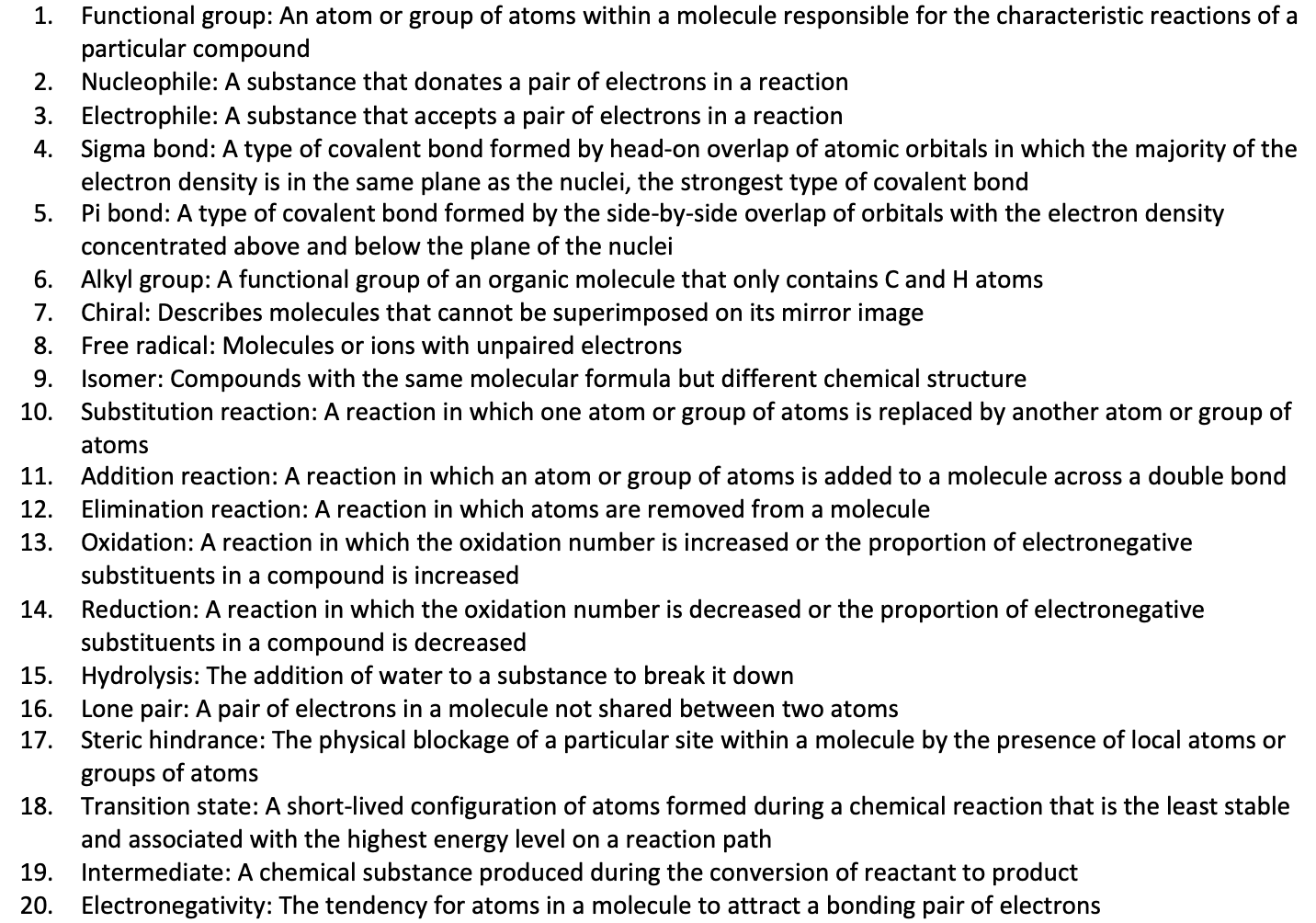Chemistry mechanisms definitions
Functional group: An atom or group of atoms within a molecule responsible for the characteristic reactions of a particular compound
Nucleophile: A substance that donates a pair of electrons in a reaction
Electrophile: A substance that accepts a pair of electrons in a reaction
Sigma bond: A type of covalent bond formed by head-on overlap of atomic orbitals in which the majority of the electron density is in the same plane as the nuclei, the strongest type of covalent bond
Pi bond: A type of covalent bond formed by the side-by-side overlap of orbitals with the electron density concentrated above and below the plane of the nuclei
Alkyl group: A functional group of an organic molecule that only contains C and H atoms
Chiral: Describes molecules that cannot be superimposed on its mirror image
Free radical: Molecules or ions with unpaired electrons
Isomer: Compounds with the same molecular formula but different chemical structure
Substitution reaction: A reaction in which one atom or group of atoms is replaced by another atom or group of atoms
Addition reaction: A reaction in which an atom or group of atoms is added to a molecule across a double bond
Elimination reaction: A reaction in which atoms are removed from a molecule
Oxidation: A reaction in which the oxidation number is increased or the proportion of electronegative substituents in a compound is increased
Reduction: A reaction in which the oxidation number is decreased or the proportion of electronegative substituents in a compound is decreased
Hydrolysis: The addition of water to a substance to break it down
Lone pair: A pair of electrons in a molecule not shared between two atoms
Steric hindrance: The physical blockage of a particular site within a molecule by the presence of local atoms or groups of atoms
Transition state: A short-lived configuration of atoms formed during a chemical reaction that is the least stable and associated with the highest energy level on a reaction path
Intermediate: A chemical substance produced during the conversion of reactant to product
Electronegativity: The tendency for atoms in a molecule to attract a bonding pair of electrons

 Knowt
Knowt
